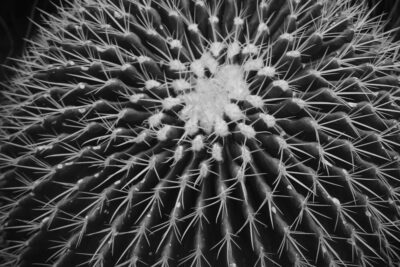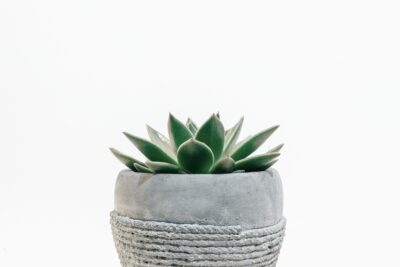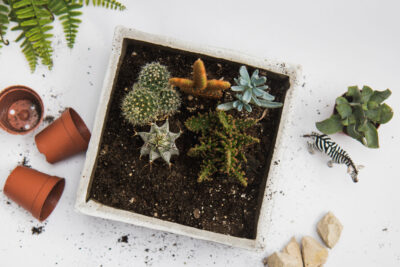
The Ultimate Guide: Maximum Size of Indoor and Outdoor Succulents

Succulents have become increasingly popular in recent years, with their unique shapes, vibrant colors, and low-maintenance care requirements. These hardy plants are known for their ability to store water in their leaves, stems, and roots, making them perfect for both indoor and outdoor environments. However, many succulent enthusiasts often wonder about the maximum size that these plants can reach, both indoors and outdoors.
We will explore the maximum size that indoor and outdoor succulents can grow to, providing valuable insights and tips for succulent lovers. We will discuss the factors that influence the size of succulents, such as species, pot size, light conditions, and growing conditions. Additionally, we will provide recommendations for suitable succulent species for smaller indoor spaces and larger outdoor gardens, so you can make informed decisions when choosing your plants. Whether you are a seasoned succulent collector or just starting out, this ultimate guide will help you understand and maximize the growth potential of your succulents.
- Provide succulents with ample space to grow by choosing a larger pot or container
- Ensure proper drainage by using well-draining soil
- Avoid overcrowding by giving each succulent enough room to spread out
- Regularly prune and trim succulents to maintain their size and prevent overgrowth
- Place succulents in areas with sufficient sunlight for optimal growth
- Control the amount of water given to succulents to prevent excessive growth
- Use fertilizer sparingly to avoid promoting excessive size in succulents
- Consider the natural growth habits of different succulent species when determining their maximum size
- Frequently Asked Questions
Provide succulents with ample space to grow by choosing a larger pot or container
Succulents are known for their ability to thrive in a variety of environments, making them a popular choice for both indoor and outdoor gardening. However, to ensure their maximum growth and health, it's important to provide them with ample space to spread their roots and grow.
One way to do this is by choosing a larger pot or container for your succulents. This will allow their roots to grow freely and prevent them from becoming root bound. When succulents become root bound, their growth can be stunted, and they may not reach their full potential.
When selecting a pot or container, it's important to consider both the size of the succulent and its growth habits. Some succulents, like Echeverias, can grow quite large and require more space, while others, like Haworthias, tend to stay smaller and can thrive in smaller pots.
If you're unsure about the size of pot or container to choose, a general rule of thumb is to select one that is at least 1-2 inches larger in diameter than the current size of the succulent's root ball. This will provide enough room for the roots to spread out and promote healthy growth.
Additionally, it's important to choose a pot or container with adequate drainage. Succulents are prone to root rot if their roots sit in waterlogged soil for too long. Make sure the pot has drainage holes at the bottom to allow excess water to escape.
 Are my succulents stretching under my grow light? How to prevent it
Are my succulents stretching under my grow light? How to prevent itOverall, providing succulents with ample space to grow is crucial for their long-term health and vitality. By choosing a larger pot or container and ensuring proper drainage, you can help your succulents reach their maximum size and thrive in both indoor and outdoor settings.
Ensure proper drainage by using well-draining soil
One of the key factors in maintaining the maximum size of your indoor and outdoor succulents is ensuring proper drainage. Succulents thrive in well-draining soil that allows excess water to flow out freely. When water accumulates in the pot or container, it can lead to root rot and other issues that hinder the growth of your succulents.
To ensure proper drainage, it is essential to use well-draining soil specifically formulated for succulents. You can easily find pre-made succulent soil mixes at your local garden center or online. These mixes are usually composed of a combination of regular potting soil, perlite, and coarse sand, which help create a porous environment that allows water to drain effectively.
Alternatively, you can create your own well-draining soil mix by combining equal parts of potting soil, perlite, and coarse sand. This DIY approach allows you to adjust the proportions based on the specific needs of your succulents.
Remember to choose a container with drainage holes at the bottom to allow excess water to escape. If you have a decorative pot without drainage holes, you can place your succulent in a plastic nursery pot with drainage holes and then place that inside the decorative pot. This way, you can still showcase your succulent while ensuring proper drainage.
Additionally, it is crucial to avoid overwatering your succulents. These plants are adapted to arid environments and have built-in water storage capabilities. They can survive for extended periods without frequent watering. Overwatering can lead to root rot and ultimately hinder the maximum growth potential of your succulents.
Remember to water your succulents only when the top inch of soil feels dry. This approach ensures that you provide enough moisture without causing waterlogged conditions.
 How Resilient Are Succulents to Temperature Fluctuations?
How Resilient Are Succulents to Temperature Fluctuations?By ensuring proper drainage through the use of well-draining soil and avoiding overwatering, you create an optimal growth environment for your indoor and outdoor succulents. This allows them to reach their maximum size and thrive in your home or garden.
Avoid overcrowding by giving each succulent enough room to spread out
When it comes to succulents, providing them with enough space to grow is essential for their overall health and appearance. Overcrowding can lead to stunted growth, increased susceptibility to diseases, and a less visually appealing arrangement. Whether you are planning to grow succulents indoors or outdoors, understanding the maximum size each variety can reach is crucial for creating a well-spaced and thriving succulent garden.
Indoor succulents, such as Aloe Vera and Echeveria, require adequate space to allow their leaves and stems to expand freely. It is recommended to plant these types of succulents in individual pots, ensuring that there is ample room for them to grow to their maximum size. By doing so, you not only prevent overcrowding, but you also facilitate proper airflow around each plant, reducing the risk of fungal infections and rot.
On the other hand, outdoor succulents, like Agave and Sedum, have the potential to spread out and form beautiful clusters. To avoid overcrowding, it is advisable to plant them with enough distance between each other, depending on their maximum size. This allows for better access to sunlight, adequate air circulation, and prevents competition for nutrients from the soil.
Consider the maximum size of the succulents you plan to grow
Every succulent species has its own growth pattern and size potential. Some succulents may remain relatively compact, while others have the capacity to grow much larger. It is important to research and understand the maximum size of the succulents you intend to grow, as this will help you determine the appropriate spacing between each plant.
For instance, if you are planning to create an indoor succulent display using varieties like Haworthia and Crassula, which typically stay small, you can arrange them closer together. On the other hand, if you want to cultivate larger outdoor succulents like Agave Americana or Aeonium Arboreum, you will need to provide more space between each plant to accommodate their potential size.
 The Science Behind Succulents Turning Red in Specific Conditions
The Science Behind Succulents Turning Red in Specific ConditionsRemember that succulents can take several years to reach their maximum size, so it is crucial to consider their growth rate as well. Some succulents may grow slower than others, requiring less spacing initially, while others may have a more rapid growth rate, necessitating more generous spacing from the start.
Creating a visually appealing arrangement
Proper spacing not only benefits the health of your succulents but also contributes to creating a visually appealing arrangement. By giving each succulent enough room to spread out, you can showcase their unique shapes, colors, and textures, allowing them to shine individually. This spacing also allows for better visual balance and harmony within your succulent garden.
Consider utilizing various sizes and heights of succulents to create an interesting and dynamic arrangement. By combining different types of succulents, you can create a visually striking display that captures attention and adds a touch of natural beauty to any indoor or outdoor space.
- Choose a variety of succulents with contrasting textures and colors.
- Arrange taller succulents towards the back and shorter ones towards the front for a layered effect.
- Leave enough space between each succulent to allow for growth and prevent overcrowding.
By following these tips, you can ensure that your succulents have the space they need to thrive and create a visually stunning display that will be the envy of any succulent enthusiast.
Regularly prune and trim succulents to maintain their size and prevent overgrowth
One of the key factors in keeping your indoor and outdoor succulents at their maximum size is regular pruning and trimming. Succulents naturally have a compact and dense growth habit, but without proper maintenance, they can become leggy and overgrown.
Pruning not only helps to control the size of your succulents but also promotes healthier growth. It encourages the development of new branches and stimulates the plant to produce more compact and robust foliage.
 Factors Affecting Succulent Size: Growth Potential & Limitations
Factors Affecting Succulent Size: Growth Potential & LimitationsWhen pruning succulents, it's essential to use clean and sharp tools to avoid damaging the plant. Sharp scissors or pruning shears are ideal for the task. Before pruning, identify any dead or dried-out leaves or stems and carefully remove them.
Trimming back excessive growth can be done by cutting the stems just above a leaf node or joint. This method helps redirect the plant's energy towards new growth, resulting in a more compact and uniform appearance.
Additionally, removing offsets or baby plants that sprout around the base of the parent succulent can help maintain its size. These offsets can be gently twisted or cut off and replanted to grow new succulents.
Remember to give your succulents some time to recover after pruning. They may initially appear slightly stressed or wilted, but with proper care and watering, they will bounce back and thrive.
Key Takeaways:
- Regular pruning and trimming help maintain the size and prevent overgrowth of indoor and outdoor succulents.
- Use clean and sharp tools to avoid damaging the plants when pruning.
- Identify and remove any dead or dried-out leaves or stems before pruning.
- Trim excessive growth just above a leaf node or joint to redirect the plant's energy.
- Removing offsets or baby plants can also help control the size of succulents.
- Give your succulents time to recover after pruning, and they will bounce back and thrive.
Place succulents in areas with sufficient sunlight for optimal growth
Succulents are known for their ability to thrive in sunlight, so it is essential to place them in areas where they can receive sufficient light for optimal growth. Whether you are keeping succulents indoors or outdoors, providing them with the right amount of sunlight is crucial.
 Succulents: Full Sun or Shade for Optimal Growth?
Succulents: Full Sun or Shade for Optimal Growth?For indoor succulents, it is best to place them near a window where they can get at least 4-6 hours of direct sunlight each day. South-facing windows generally provide the brightest light, while east or west-facing windows can also be suitable. If you do not have access to enough natural light indoors, you can supplement it with artificial grow lights.
When it comes to outdoor succulents, they generally need more sunlight than their indoor counterparts. Choose a location in your garden or patio that receives full sun for most of the day. If you live in a region with intense heat or strong afternoon sun, some succulents may benefit from partial shade during the hottest hours to prevent sunburn.
Remember that each succulent species has its own light requirements, so it is essential to research the specific needs of the succulents you have to ensure they receive the right amount of sunlight.
Control the amount of water given to succulents to prevent excessive growth
When it comes to succulents, one of the key factors in controlling their size is the amount of water they receive. These plants are known for their ability to store water in their leaves, stems, and roots, which allows them to survive in dry and arid conditions. However, if succulents are given too much water, they can become overhydrated and start to grow excessively.
To prevent this from happening, it is important to understand the watering needs of different succulent varieties. Some succulents, such as Aloe vera and Echeveria, prefer to be watered more frequently, while others, like Haworthia and Agave, thrive with less frequent watering. It is crucial to research the specific watering requirements of each succulent species to ensure they receive the right amount of water.
In general, succulents should be watered sparingly. It is recommended to wait until the soil is completely dry before watering again. This allows the succulent to use up the stored water and prevents excessive growth. Overwatering can lead to root rot and other issues that can stunt the growth of the succulent or even cause it to die.
Consider the pot size for indoor succulents
In addition to controlling the amount of water given to succulents, the size of the pot can also influence their growth. When it comes to indoor succulents, it is generally best to choose a pot that is slightly smaller than the size of the plant.
 Succulents: Perennials or One-Season Wonders? Unveiling their Lifespan
Succulents: Perennials or One-Season Wonders? Unveiling their LifespanA smaller pot helps limit the amount of space the succulent has to grow, which in turn restricts its size. The restricted root growth can help maintain a more compact and manageable size for indoor succulents. Additionally, a smaller pot ensures that the soil dries out faster, reducing the risk of overwatering.
Consider the planting location for outdoor succulents
For outdoor succulents, the planting location plays a significant role in controlling their size. Placing succulents in areas with limited space or in raised beds can help restrict their growth. This is particularly important for succulents that have a tendency to spread or take over an area.
It is also worth considering the amount of sunlight the outdoor succulents receive. While succulents generally thrive in bright light, excessive exposure to direct sunlight can cause them to grow too quickly. Providing some shade or using shading techniques, such as using a shade cloth, can help regulate their growth and prevent them from becoming overly large.
- Tip: Pruning succulents can also help control their size. Trimming off excessive growth or removing offsets can keep the plant compact and prevent it from outgrowing its designated space.
By carefully controlling the amount of water, considering the pot size for indoor succulents, and choosing the right planting location for outdoor succulents, you can effectively limit their size and maintain a visually appealing arrangement.
Use fertilizer sparingly to avoid promoting excessive size in succulents
Fertilizer can be a helpful tool in promoting healthy growth in succulents. However, it is important to use it sparingly to avoid promoting excessive size in these plants. Succulents are naturally adapted to survive in arid environments with limited nutrient availability. Therefore, providing them with too much fertilizer can lead to rapid growth and oversized plants.
The key to using fertilizer on succulents is to choose a balanced, slow-release formula specifically designed for these plants. This type of fertilizer releases nutrients gradually over time, preventing a sudden surge in growth. Additionally, it is important to dilute the fertilizer to half or even a quarter of the recommended strength to avoid overfeeding the succulents.
Another important consideration when using fertilizer on succulents is the frequency of application. It is recommended to fertilize indoor succulents only once or twice a year, while outdoor succulents may benefit from fertilization every three to four months during the growing season. Applying fertilizer more frequently can lead to excessive growth and weak, leggy stems.
 Can Succulents Survive Prolonged Exposure to Direct Sunlight?
Can Succulents Survive Prolonged Exposure to Direct Sunlight?Furthermore, it is crucial to monitor the growth of your succulents after fertilizing. If you notice that your plants are growing too quickly or becoming too large for their containers, it is advisable to reduce or completely stop fertilization. This will allow the plants to slow down their growth and maintain a more manageable size.
Remember, while some succulent enthusiasts may desire larger plants, it is important to consider the limitations of your indoor or outdoor space. Overly large succulents may outgrow their containers or overcrowd other plants in your garden. Therefore, using fertilizer sparingly and monitoring the growth of your succulents will help you maintain a healthy and aesthetically pleasing size for these unique plants.
Consider the natural growth habits of different succulent species when determining their maximum size
When it comes to determining the maximum size of indoor and outdoor succulents, it is important to consider the natural growth habits of different species. Succulents come in various shapes and sizes, and their growth patterns can vary significantly. Understanding these growth habits will help you make informed decisions about the placement and care of your succulents.
Factors influencing succulent size
- Species: Different succulent species have varying growth rates and overall sizes. Some succulents, like Echeveria and Aloe, tend to grow compactly and stay relatively small, while others, such as Agave and Yucca, can grow larger and spread out.
- Genetics: Within each species, individual succulents can still exhibit slight variations in size due to genetic factors. Some may grow taller or wider than others, even if they belong to the same species.
- Environmental conditions: The size of a succulent can also be influenced by the conditions it is grown in. Factors like sunlight exposure, temperature, humidity, and watering frequency can all affect the growth and size of succulents.
Indoor succulents vs. outdoor succulents
It is worth noting that the maximum size of succulents can differ between indoor and outdoor environments.
- Indoor succulents: When grown indoors, succulents usually have limited space for their roots to grow, which can result in smaller overall sizes. Additionally, indoor conditions such as lower light levels and controlled temperatures can also contribute to slower growth and smaller sizes.
- Outdoor succulents: In outdoor environments, succulents have access to more space for their roots to spread and grow. They also receive natural sunlight, which is often more intense than indoor lighting, allowing them to grow larger and more vigorously.
Managing the size of succulents
If you want to control the size of your succulents, there are a few strategies you can employ:
- Pruning: Regular pruning can help maintain the size and shape of succulents. By removing excess growth or leggy stems, you can encourage compact growth and prevent them from becoming too large.
- Container size: Choosing an appropriate-sized container for your indoor succulents can limit their growth. A smaller container will restrict the amount of space available for the roots, which can help keep the succulent smaller.
- Environmental control: Manipulating environmental factors such as light, temperature, and watering can also influence the size of your succulents. Providing lower light levels or reducing watering frequency can slow down their growth.
By considering the natural growth habits of different succulent species and employing appropriate management techniques, you can ensure that your succulents thrive and stay within the desired size range.
 Succulent Size Exploration: Unveiling Their Maximum Growth Potential
Succulent Size Exploration: Unveiling Their Maximum Growth PotentialFrequently Asked Questions
1. How big do indoor succulents typically grow?
Indoor succulents usually grow between 2 to 10 inches in height, depending on the species.
2. What is the maximum size an outdoor succulent can reach?
Outdoor succulents can vary greatly in size, but some species can grow up to several feet tall and wide.
3. Can I control the size of my indoor succulents?
Yes, you can control the size of indoor succulents by limiting their pot size and providing proper pruning and maintenance.
4. Are there any limitations to the size of outdoor succulents?
 Optimal Growth of Succulents: Sun or Shade Preference?
Optimal Growth of Succulents: Sun or Shade Preference?Outdoor succulents have the potential to grow larger, but their size can be influenced by factors such as climate, available space, and growing conditions.
If you want to read more articles similar to The Ultimate Guide: Maximum Size of Indoor and Outdoor Succulents, you can visit the Growing Conditions category.






You Must Read